
Sir Samuel Hughes, was the Canadian Minister of Militia and Defence during World War I. He was notable for being the last Liberal-Conservative cabinet minister, until he was dismissed from his cabinet post.

The Royal Canadian Regiment (RCR) is an infantry regiment of the Canadian Army. The regiment consists of four battalions, three in the Regular Force and one in the primary reserve. The RCR is ranked 1st in the order of precedence amongst Canadian Army infantry regiments, but in a quirk of the rules of seniority, its 4th battalion is 9th.

The Canadian Grenadier Guards (CGG) is a reserve infantry regiment in the 34 Canadian Brigade Group, 2nd Canadian Division, of the Canadian Army. The regiment is the oldest and second-most-senior infantry regiment in the Primary Reserve of the Canadian Army. Located in Montreal, its main role is the provision of combat-ready light infantry troops in support of Canadian regular infantry. It is a Household Foot Guard regiment and also provides soldiers for public ceremonial duties, performing similar ceremonial duties as the Guards regiments of the British Army. This primarily entails mounting the guard at Government House, the Governor General's residence, and performing the "Changing the Guard" ceremony on Parliament Hill in Ottawa, a task it shares with Canada's senior Household Foot Guard regiment, the Governor General's Foot Guards of Ottawa. The Canadian Grenadier Guards is an allied regiment to the British Grenadier Guards.

The 2nd Canadian Parliament was in session from March 5, 1873, until January 2, 1874. The membership was set by the 1872 federal election from July 20 to October 12, 1872, and it changed only somewhat due to resignations and by-elections until it was dissolved prior to the 1874 election. Among the by-elections were the first election of PEI MPs, PEI joining Confederation in 1873.
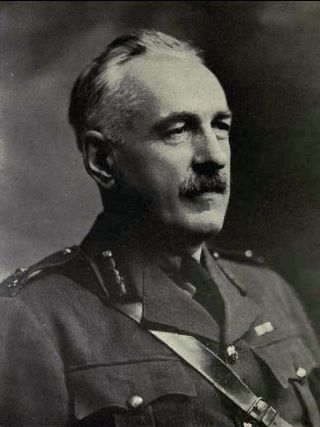
Sydney Chilton Mewburn, was a Canadian lawyer, soldier, and politician.

The Argyll and Sutherland Highlanders of Canada (Princess Louise's), or A & SH of C, is a Primary Reserve Highland infantry regiment of the Canadian Forces, based at John W. Foote VC Armoury in Hamilton, Ontario.
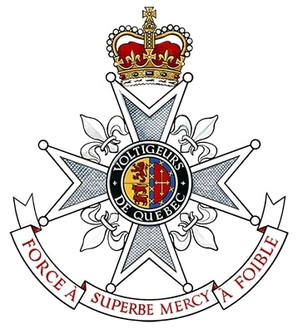
Les Voltigeurs de Québec is a Primary Reserve infantry regiment of the Canadian Forces. It is at the Quebec City Armoury in Quebec City, Quebec, Canada. The name of the regiment commemorates another older French-speaking Canadian militia light infantry unit, the Canadian Voltigeurs. The founder of the Canadian Voltigeurs, Lieutenant-Colonel Charles-Michel d'Irumberry de Salaberry, was the father of the two men who raised Les Voltigeurs de Québec. The regiment was formed in March 1862, with its headquarters in Quebec City, by the amalgamation into a regiment of eight independent Volunteer Militia Rifle companies. The first of these companies was originally raised in December 1861. Between 1862 and 1867 these companies were frequently disbanded, reformed and renumbered. In 1942 it provided an armoured regiment.
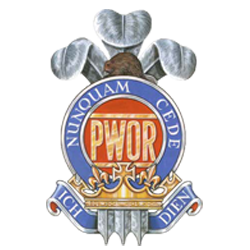
The Princess of Wales' Own Regiment (PWOR) is a Primary Reserve infantry regiment of the Canadian Army.
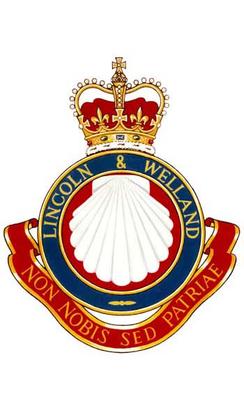
The Lincoln and Welland Regiment is a Primary Reserve infantry regiment of the Canadian Army based in St. Catharines and Welland, Ontario.

The Grey and Simcoe Foresters is a Primary Reserve infantry regiment of the Canadian Forces. Within the Canadian Army, it is part of the 4th Canadian Division's 31 Canadian Brigade Group. Due to the restructuring of the British Army, The Worcestershire and Sherwood Foresters Regiment was amalgamated into The Mercian Regiment, as its 2nd Battalion, leaving The Grey and Simcoe Foresters as the only remaining unit in the Commonwealth of Nations known to be distinctly designated as a regiment of Foresters.

Les Fusiliers du St-Laurent is a Primary Reserve infantry regiment of the Canadian Army. It was first raised in 1869 but also perpetuates the 4th Battalion, Select Embodied Militia, from the War of 1812. From 1954 to 1968, as a reserve regiment, it also was given a subsidiary title as the 5th Battalion of the Van Doos. This association was ended in 1968.
The history of the Canadian Army, began when the title first came into official use in November 1940, during the Second World War, and is still used today. Although the official titles, Mobile Command, and later Land Force Command, were used from February 1968 to August 2011, "Canadian Army" continued to be unofficially used to refer to the ground forces of the Canadian Armed Forces, much as it has been from Confederation in 1867 to the present. The term was often even used in official military publications, for example in recruiting literature and the official newspaper of the Canadian Forces, The Maple Leaf. On August 16, 2011, the title, "Canadian Army", was officially restored, once again bringing the official designation in line with common and historical usage.
The Prince Albert Volunteers (PAV) is the name of two historical infantry units headquartered in Prince Albert, Saskatchewan. The unit was first raised in 1885 during the North-West Rebellion and disbanded after hostilities ceased. In the 20th century, the unit was operational from 1913 to 1936 and 1941 to 1946. The PAV is now incorporated by amalgamation in the North Saskatchewan Regiment (N Sask R).
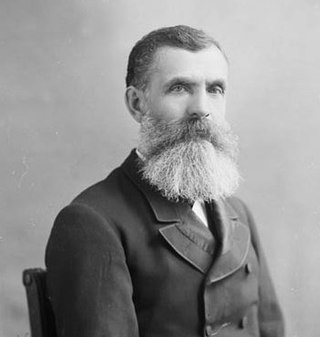
David Tisdale, was a Canadian politician.
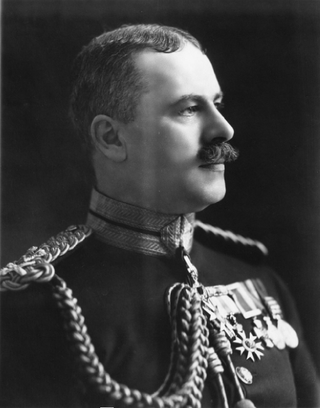
Major-General Sir Marie-Joseph-Eugène Fiset, was a Canadian physician, military officer, Deputy Minister of Militia and Defence, Member of Parliament, the 18th Lieutenant Governor of Quebec, and the 3rd Canadian Surgeon General.

The Gemunu Watch (GW) ("King Dutugemunu's Own") is a infantry regiment of the Sri Lanka Army, formed with troops from the Ceylon Light Infantry and the Ceylon Sinha Regiment in 1962. It has been deployed in many major operations against the LTTE. It is made up of 14 regular units and 9 volunteer units. Headquartered at Kuruwita Army Camp, Ratnapura. It is named after one of the most famous Lankan Kings, King Dutugemunu.

The 45th Battalion was an infantry battalion of the Australian Army. Raised for service during World War I, the battalion served in the trenches on the Western Front in France and Belgium from mid-1916 until the end of hostilities in November 1918. Following this, it was disbanded in May 1919. Later, in 1921, the battalion was re-raised as a part-time unit of the Citizens Force, based in New South Wales. The battalion remained on the order of battle until 1942, when it was merged with the 1st Battalion as part of a force reduction that was undertaken at that time in response to an over mobilisation of the Australian military in the early part of World War II. In 1948, the battalion was re-raised again and remained on the order of battle until 1960 when it was absorbed into the Royal New South Wales Regiment.
The Victoria and Haliburton Regiment was an infantry regiment of the Non-Permanent Active Militia of the Canadian Militia. In 1936, the regiment was converted from infantry to artillery to become the 45th Field Battery RCA and now forms part of the 50th Field Artillery Regiment, RCA.
The Norfolk Regiment of Canada was an infantry regiment of the Non-Permanent Active Militia of the Canadian Militia. First raised in the 1860’s as The Norfolk Rifles, the regiment was converted to a Line Regiment in 1928. In 1936, the regiment was converted from infantry to artillery and now forms part of the 56th Field Artillery Regiment, RCA.
The Lincoln Regiment was an infantry regiment of the Non-Permanent Active Militia of the Canadian Militia. In 1936, the regiment was Amalgamated with The Lincoln and Welland Regiment to form a new regiment also named The Lincoln and Welland Regiment.





































